
- Home
- Media Center
-
Events
- Wuzhen Summit
- Regional Forums
- Practice Cases of Jointly Building a Community with a Shared Future in Cyberspace
- World Internet Conference Awards for Pioneering Science and Technology
- The Light of Internet Expo
- Straight to Wuzhen Competition
- Global Youth Leadership Program
- WIC Distinguished Contribution Award
- Membership
- Research & Cooperation
- Digital Academy
-
Reports
- Collection of cases on Jointly Building a Community with a Shared Future in Cyberspace
- Collection of Shortlisted Achievements of World Internet Conference Awards for Pioneering Science and Technology
- Reports on Artificial Intelligence
- Reports on Cross — Border Ecommerce
- Reports on Data
- Outcomes of Think Tank Cooperation Program
- Series on Sovereignty in Cyberspace Theory and Practice
- Other Achievements
- About WIC
- 中文 | EN

Research team launches project to preserve images of Great Wall and ensure sustainable use of data
Li Zhe, 45, guest researcher at the School of Architecture at Tianjin University, dedicates his time to preserving images of the Great Wall, a cultural relic.
In an effort to preserve the images of the Great Wall and ensure the sustainable use of the data, a research team with the School of Architecture at Tianjin University initiated a project in late 2018 that involves the use of the latest technology as drones to collect "the most complete possible real-scene three-dimensional images of the Great Wall". By capturing successive scanning-quality images and utilizing software to create three-dimensional models, this project produces indepth revelation of the relic site that can be applied in various research fields as discovery of hidden resources, showcasing cultural relics, investigating areas of damage, and analyzing the causes of harm.
Over the past four years, Li Zhe and his team members have generated 40 terabyte of data consisting of more than three million high-definition images captured during a 20,000-kilometer drone flight. Using centimeter-definition images, the team has documented over 90 percent of the Ming Dynasty's Great Wall.
In early 2023, the team organized an exhibition in Tianjin Museum showcasing the digital outcomes of their efforts through immersive multimedia displays, 3D printed objects, and historical scene restoration.
"The Great Wall is a monumental epic of the Chinese people," said Li Zhe. "We hope that our research will not only provide support for the protection and monitoring of the Great Wall, but also showcase a more authentic and well-preserved Great Wall, enhancing its cultural allure."

Li Zhe monitors as he uses a drone to take photos of the Jiankou Great Wall section in Beijing, capital of China, Nov. 3, 2023. (Xinhua/Zhao Zishuo)
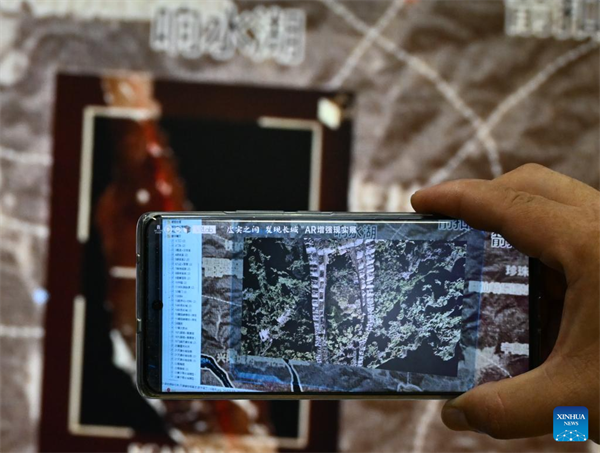
Li Zhe shows an image realized through AR technologies at their workshop in Tianjin, north China, July 25, 2023. (Xinhua/Sun Fanyue)
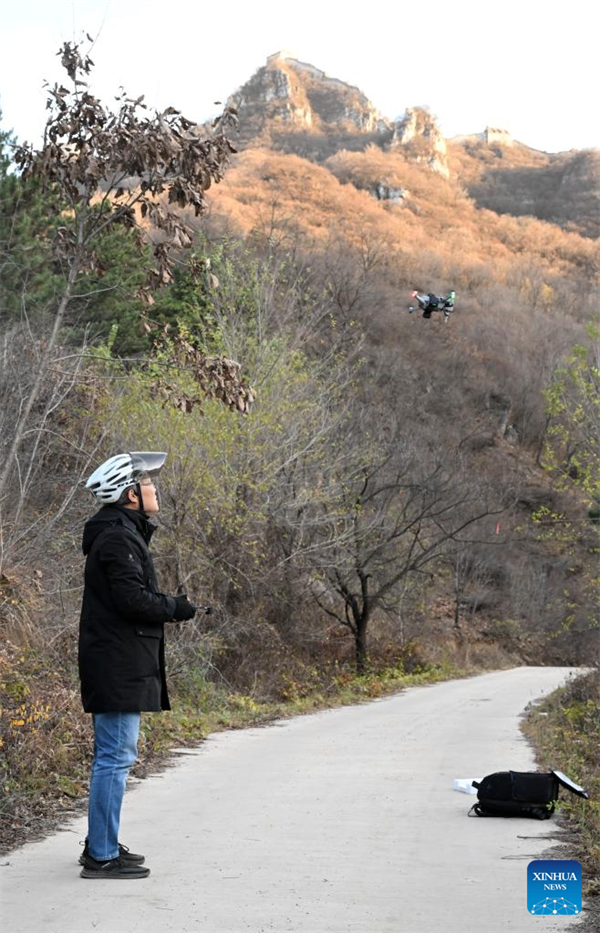
Li Zhe uses a drone to take photos of the Jiankou Great Wall section in Beijing, capital of China, Nov. 3, 2023. (Xinhua/Zhao Zishuo)
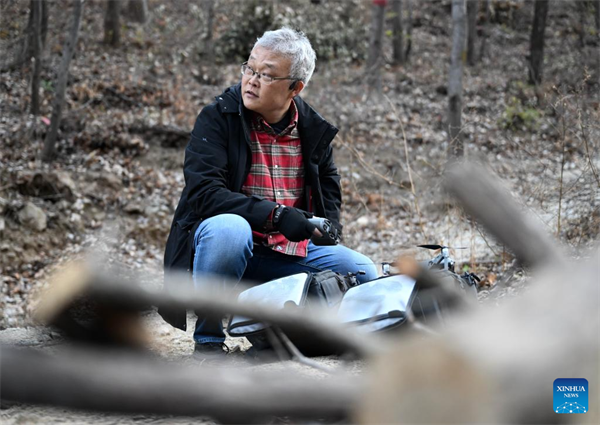
Li Zhe prepares to fly a drone during a field survey in Beijing, capital of China, Nov. 3, 2023. (Xinhua/Zhao Zishuo)

Li Zhe (front) and a student walk to the Jiankou Great Wall section in Beijing, capital of China, Nov. 3, 2023. (Xinhua/Zhao Zishuo)
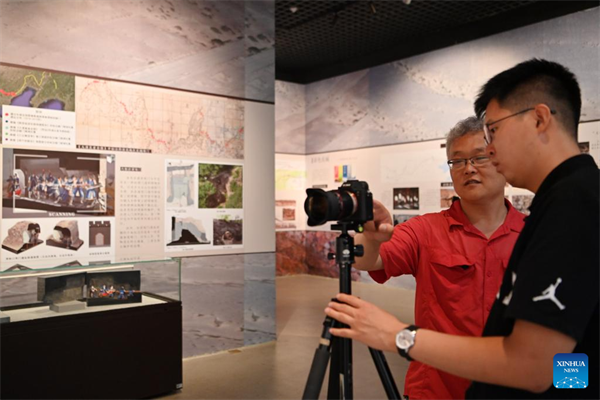
Li Zhe (L) and a student make records during the achievement exhibition on their research at the Tianjin Museum in Tianjin, north China, July 6, 2023. (Xinhua/Li Ran)
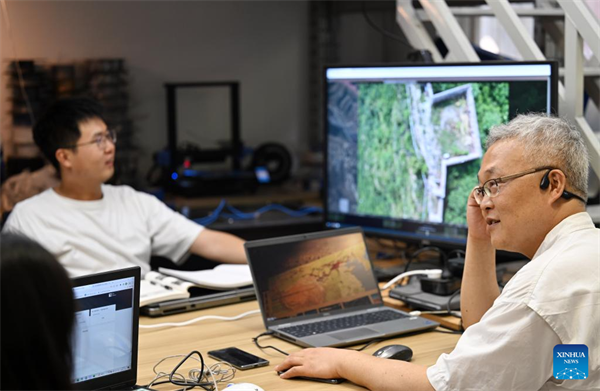
Li Zhe (R) talks with a student about images of the Great Wall at their workshop in Tianjin, north China, July 25, 2023. (Xinhua/Li Ran)
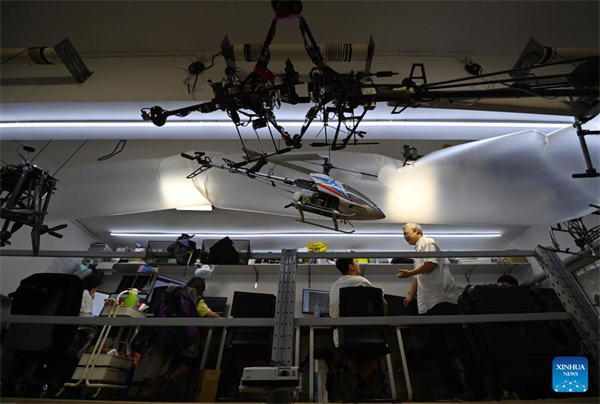
Li Zhe (4th L) and a student have a discussion at their workshop in Tianjin, north China, July 25, 2023. (Xinhua/Li Ran)
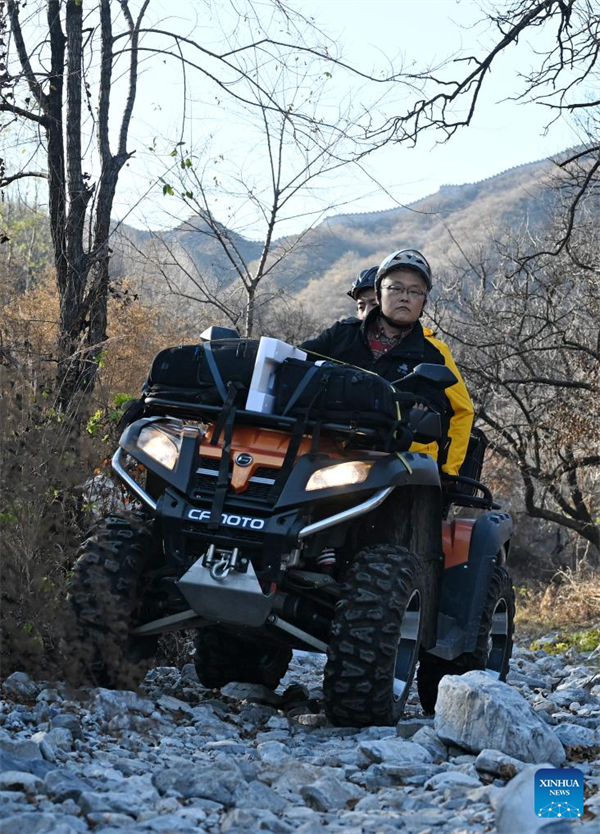
Li Zhe and a student conduct a field survey in Beijing, capital of China, Nov. 3, 2023. (Xinhua/Zhao Zishuo)

The World Internet Conference (WIC) was established as an international organization on July 12, 2022, headquartered in Beijing, China. It was jointly initiated by Global System for Mobile Communication Association (GSMA), National Computer Network Emergency Response Technical Team/Coordination Center of China (CNCERT), China Internet Network Information Center (CNNIC), Alibaba Group, Tencent, and Zhijiang Lab.





